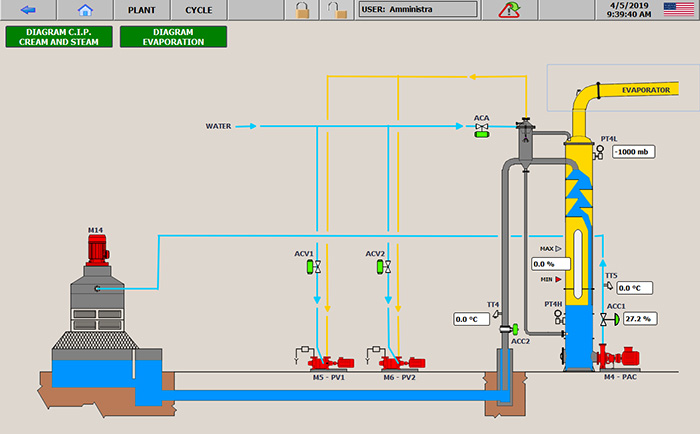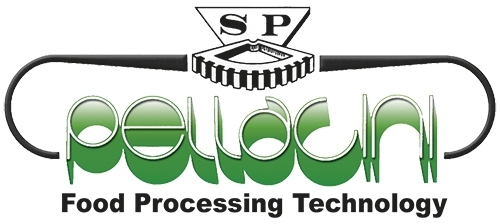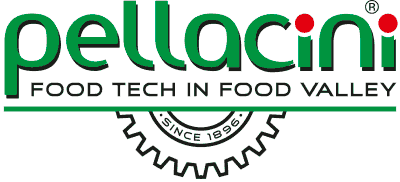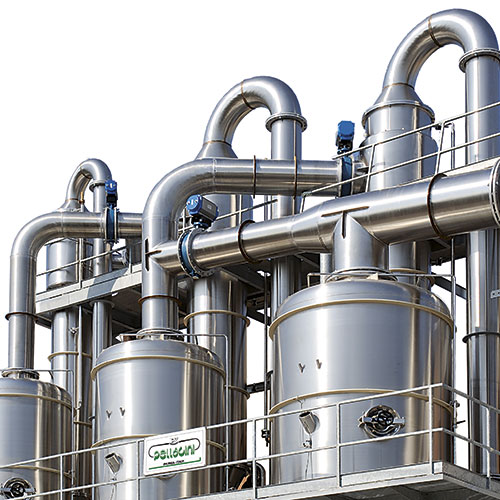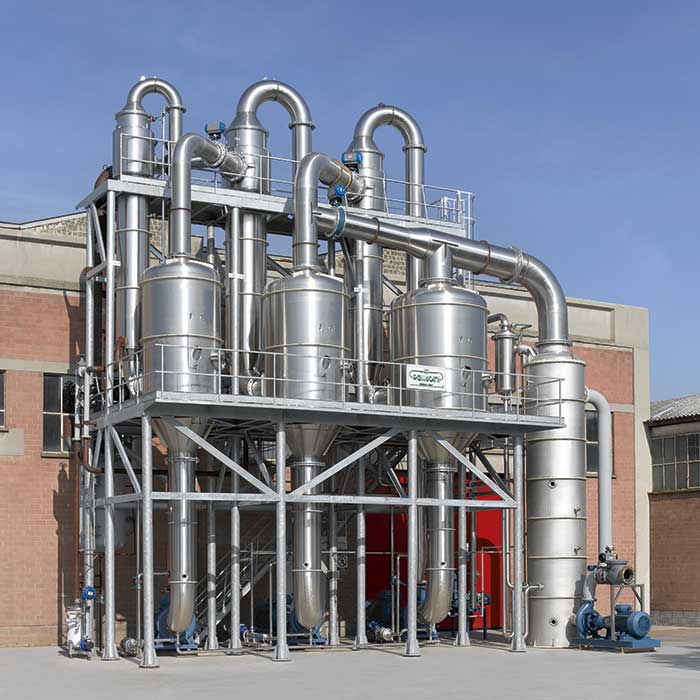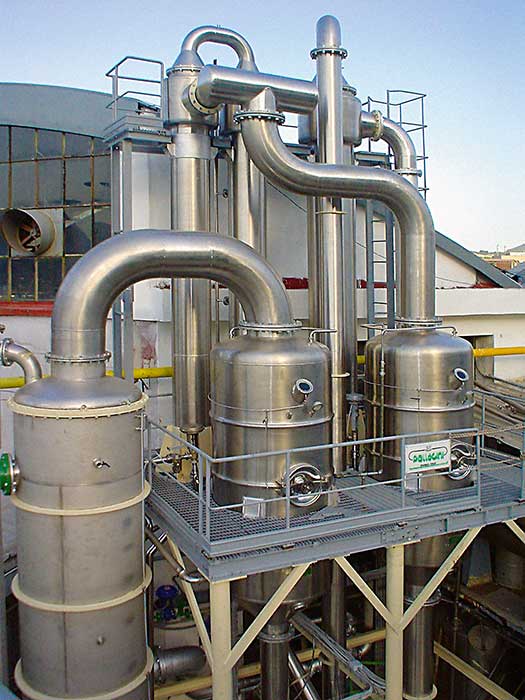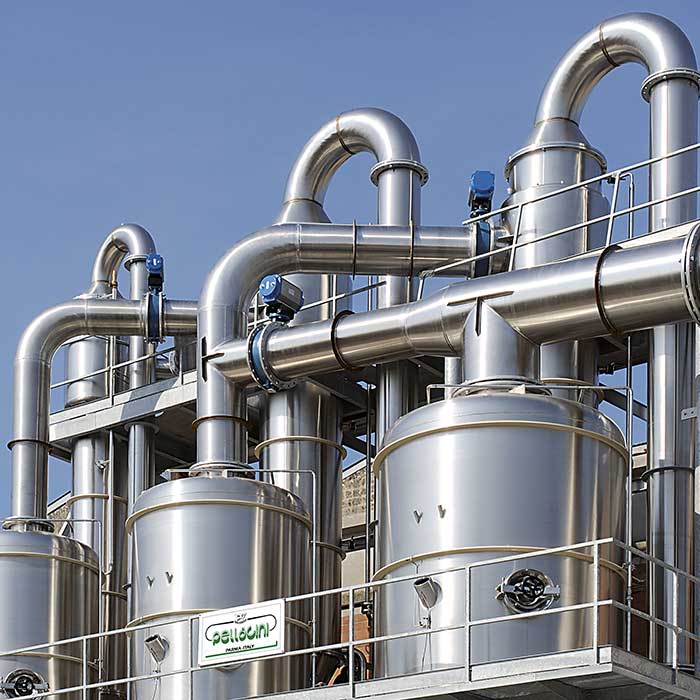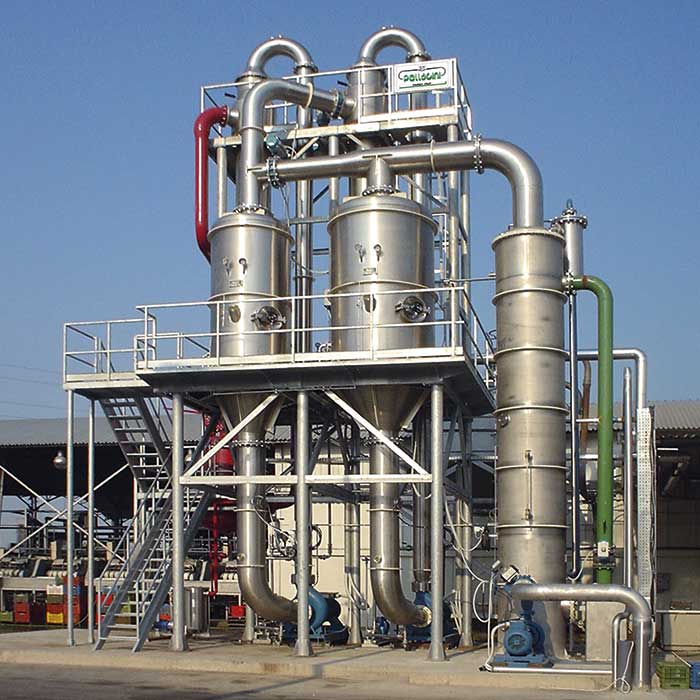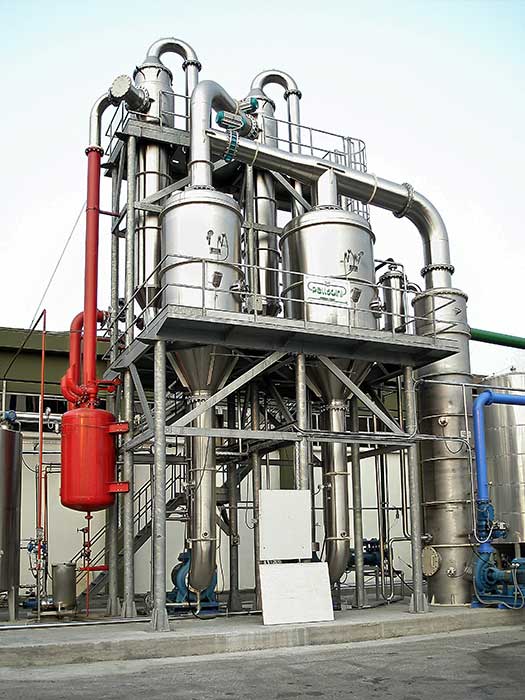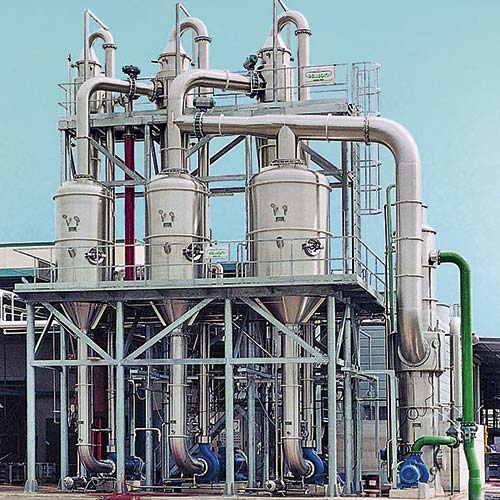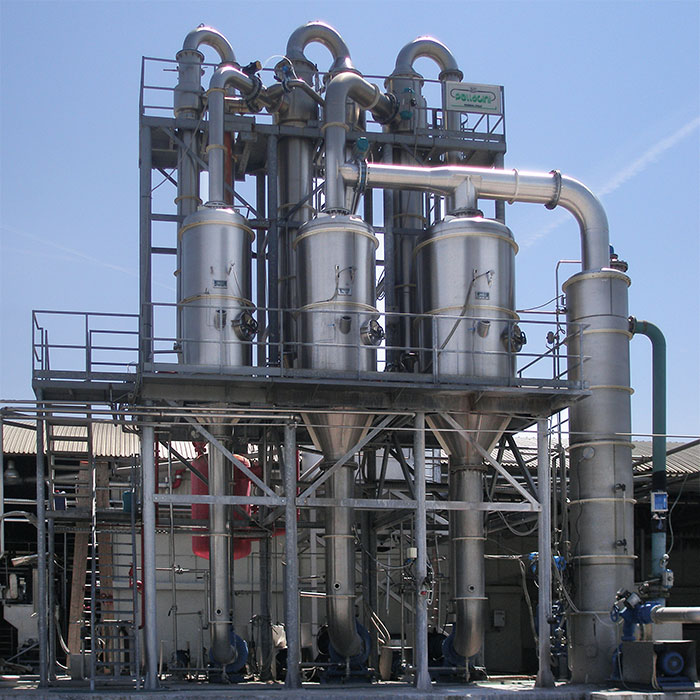MACHINES
MULTI-EFFECT CONTINUOUS FORCED-CIRCULATION EVAPORATOR
High-efficiency evaporators, specifically designed for the product to be processed
The multi-effect continuous forced circulation evaporator is used for the concentration of products with high viscosity, such as tomato juice obtained using the Cold-break method and/or with the Hot-break system.
It can also process creams made with apples, peaches, apricots, peppers, carrots and more.
Production of concentrates with high organoleptic and hygiene characteristics.
ADVANTAGES AND SPECIFIC FEATURES
RELIABILITY AND DURABILITY
Designed for durability and low maintenance.
EASY TO USE
All manual or automatic versions are easy to use.
EFFECTIVENESS
Design guided by decades of experience, to guarantee high yields and maintain the organoleptic characteristics of the product. The evaporators are specifically designed and sized for the type of product to be processed.
HIGH AUTOMATION
The latest generation evaporators are fully automatic and can be controlled via touch screen operator panels by simply selecting the production or washing cycle and pressing the start button.
CLEANING IN PLACE (C.I.P.)
The integrated automatic washing system is available for each type of evaporator, to guarantee complete system cleaning and sanitisation.
SAFETY
All the multi-effect continuous forced-circulation evaporators are equipped with all the safety systems necessary to comply with the requirements required by European directives and comply with the CE marking
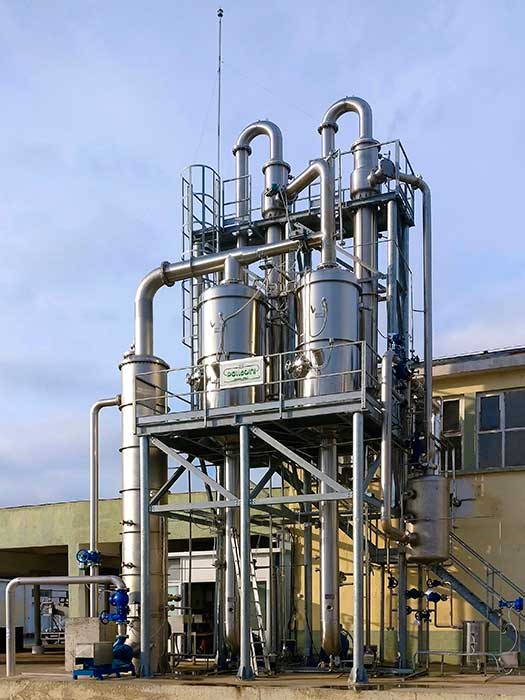
Product advantages
MULTI-EFFECT CONTINUOUS FORCED-CIRCULATION EVAPORATOR
Multi-effect system to reduce energy consumption.
- Made in AISI 304/316 stainless steel.
- Vertical tube bundles with downward forced circulation, conveyed by special centrifugal pumps with high hydraulic and energy efficiency.
- Total automation of: start-up, production, shutdown, C.I.P. washing managed by a PLC system with HMI colour touch-screen.
- The special configuration and equipment of the system identifies its particular features, including:
High thermal and energy efficiency; Elimination of the risk of burns due to power cuts.
Easy control of operating capacity according to real production needs.
Minimisation of system shutdown times.
No product losses during system shutdowns.
